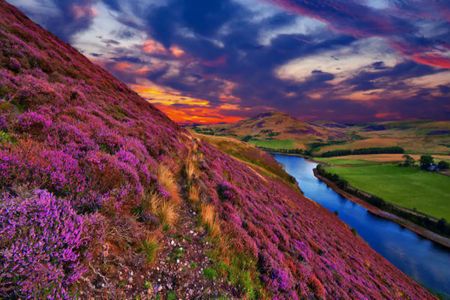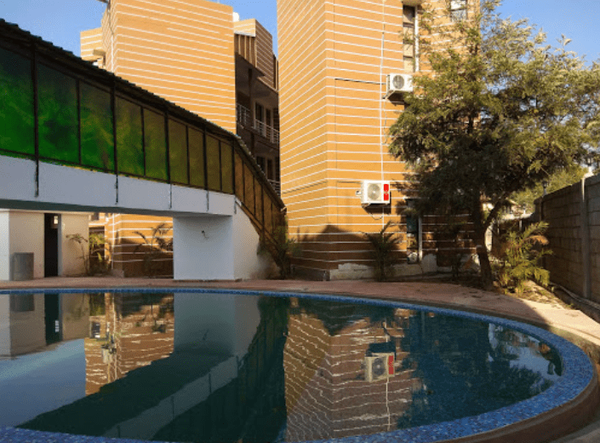Valley of Flowers Trek: Monsoon Magic in the Heart of the Himalayas
 Palakshi Meharwal
09 Apr, 2025
10 mins read
5
Palakshi Meharwal
09 Apr, 2025
10 mins read
5

Tucked away in the Garhwal region of Uttarakhand, the Valley of Flowers Trek is a spellbinding journey into one of India’s most picturesque high-altitude landscapes. Famous for its vibrant blooms, diverse fauna, and monsoon-kissed meadows, this UNESCO World Heritage Site is a paradise for trekkers, botanists, and nature lovers. The trek is not only visually rewarding but also carries deep spiritual and ecological significance.
Why the Monsoon Season is Ideal
Unlike many Himalayan treks that become inaccessible or dangerous during the monsoon, the Valley of Flowers truly comes alive during this time. From mid-July to late August, the valley is draped in a colorful tapestry of alpine flowers, nurtured by the steady rains and gentle sunlight. This brief blooming window transforms the entire region into a living botanical garden, boasting over 500 species of flora including blue poppies, cobra lilies, and Himalayan bellflowers.
This unique phenomenon has drawn naturalists and researchers for decades. The valley’s floral diversity was first documented in 1931 by British mountaineer Frank Smythe, whose discovery sparked global interest and led to the area’s designation as a protected national park in 1982.
Route Overview and Trek Details
The trek typically begins from Govindghat, a small town situated on the banks of the Alaknanda River. From here, a 14-kilometer path leads to Ghangaria, the base camp for both the Valley of Flowers and the sacred Hemkund Sahib Gurudwara. The trail to the valley diverges from Ghangaria and unfolds across a well-maintained path, eventually opening into an expansive alpine valley at an altitude of about 3,658 meters (12,000 feet).
Distance and Duration:
- Total Trek Distance: ~38 km (round trip)
- Duration: 5 to 6 days, including acclimatization
- Best Time to Visit: Mid-July to late August
The trail is considered moderate in difficulty. While it doesn’t demand technical climbing skills, a basic level of fitness and endurance is necessary due to the elevation and variable weather.
Flora and Fauna: A Biodiversity Hotspot
What sets this trek apart is the sheer richness of biodiversity. In addition to wildflowers, the region is home to several endangered and rare species. The elusive snow leopard, Himalayan black bear, musk deer, and red fox have been spotted in the higher reaches of the park.
The park’s floral palette changes weekly during the monsoon season, offering a fresh visual experience to visitors arriving at different times. Botanists often time their visits according to specific bloom cycles, hoping to observe species like Saussurea obvallata, better known as the Brahma Kamal, which is revered in Indian culture for its rarity and spiritual significance.
Cultural Significance
Besides its ecological allure, the Valley of Flowers holds cultural and spiritual meaning. The nearby Hemkund Sahib, situated at 4,329 meters, is one of the highest Gurudwaras in the world and a major pilgrimage site for Sikhs. The combination of spiritual serenity and natural grandeur makes the trek a soul-stirring experience.
Locals also believe that the valley is the same mythical place mentioned in the Ramayana, where Hanuman found the magical herb Sanjeevani to revive Lakshmana. These legends further deepen the sense of awe surrounding this destination.
Sustainable Trekking Practices
Given the valley’s protected status, sustainability is not just encouraged but mandatory. The government of Uttarakhand and the forest department have set strict regulations to preserve the delicate ecosystem. Visitors are required to obtain permits, and camping within the valley is prohibited. Instead, all trekkers return to Ghangaria after their day’s exploration.
To minimize human impact, trekkers are advised to:
- Avoid using plastic or non-biodegradable materials
- Stick to marked trails
- Refrain from picking flowers or disturbing wildlife
Local guides and porters play a vital role in maintaining these practices. Hiring them not only supports the local economy but also ensures that trekkers stay informed about the terrain, weather, and ecological guidelines.
Health and Safety Considerations
The monsoon, while adding to the valley's charm, also brings slippery trails and unpredictable weather. Rain gear, sturdy hiking boots, and layered clothing are essential. It's advisable to carry personal medical kits and altitude sickness medication, as the valley sits well above 3,000 meters.
Although the trail is well-maintained, landslides can occasionally disrupt travel between Govindghat and Ghangaria. Travelers should monitor local weather reports and advisories from forest officials before planning their visit.
How to Reach
- Nearest Airport: Jolly Grant Airport, Dehradun (approx. 292 km from Govindghat)
- Nearest Railway Station: Rishikesh (approx. 273 km from Govindghat)
- Road Access: Buses and taxis are available from Rishikesh and Haridwar to Joshimath, and then to Govindghat
From Govindghat, ponies and porters are available for the trek to Ghangaria, especially useful for senior citizens or less-experienced trekkers.
Accommodations and Amenities
Ghangaria serves as the hub for all accommodations. Expect basic but comfortable guesthouses and lodges offering vegetarian meals. While mobile networks are patchy, electricity and hot water are generally available.
Due to the growing popularity of the trek, it's advisable to book accommodations in advance during the peak monsoon season. Several travel agencies also offer guided group tours that include permits, meals, lodging, and experienced guides.
Final Thoughts: A Journey Beyond the Ordinary
The Valley of Flowers Trek isn’t just about reaching a destination; it’s about immersing yourself in a rare Himalayan phenomenon that occurs but once a year. It’s a celebration of nature’s resilience, color, and design—blooming magnificently under the drizzles of the monsoon.
This trek offers more than just breathtaking views; it’s an invitation to slow down, reconnect with nature, and witness a fleeting miracle that has been unfolding in silence for centuries. Whether you’re an experienced trekker, a nature photographer, or a spiritual seeker, the Valley of Flowers promises a profoundly enriching experience that stays with you long after you’ve descended from the mountains.
Written By:
Palakshi Meharwal



Hotels at your convenience
Now choose your stay according to your preference. From finding a place for your dream destination or a mere weekend getaway to business accommodations or brief stay, we have got you covered. Explore hotels as per your mood.





